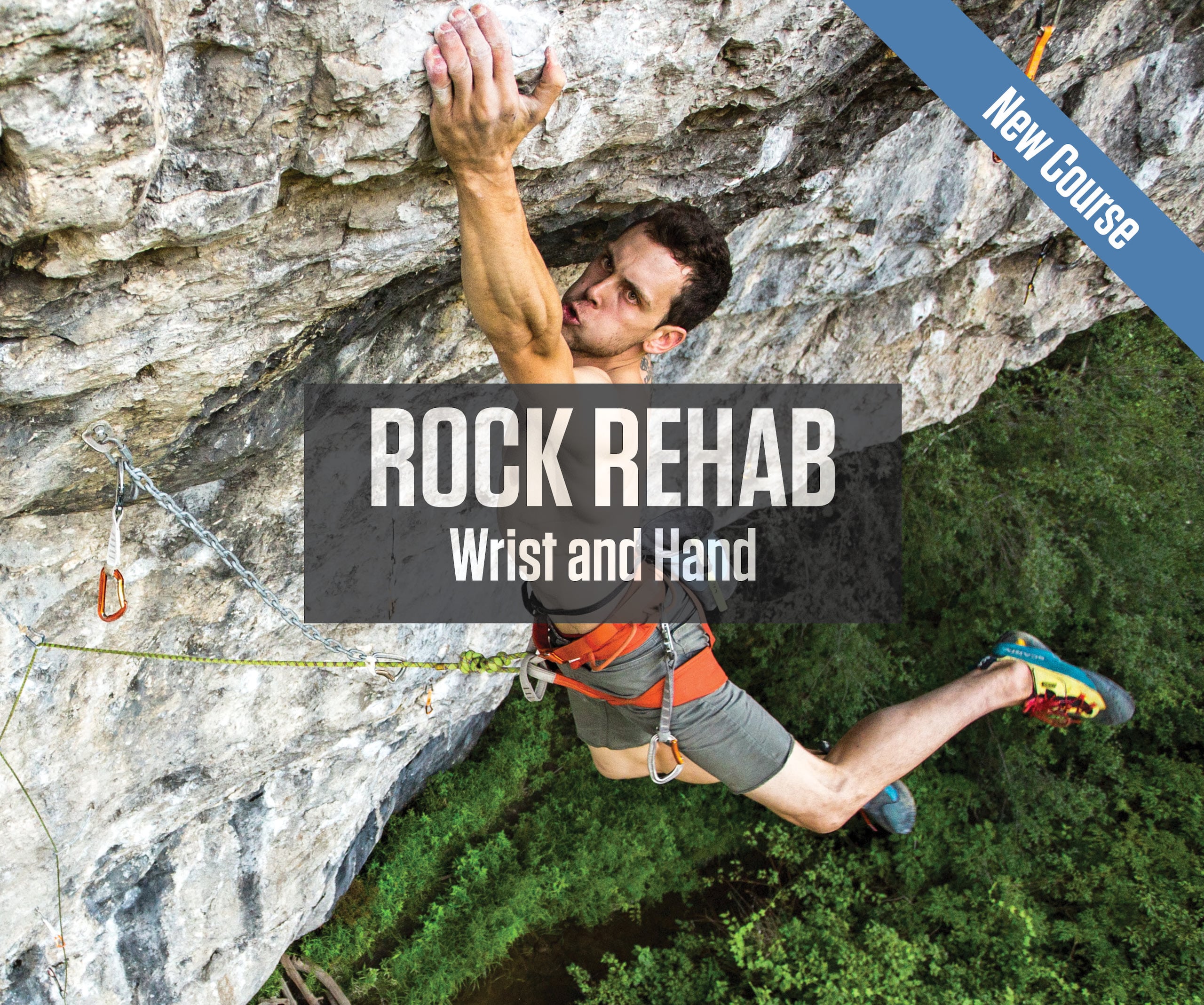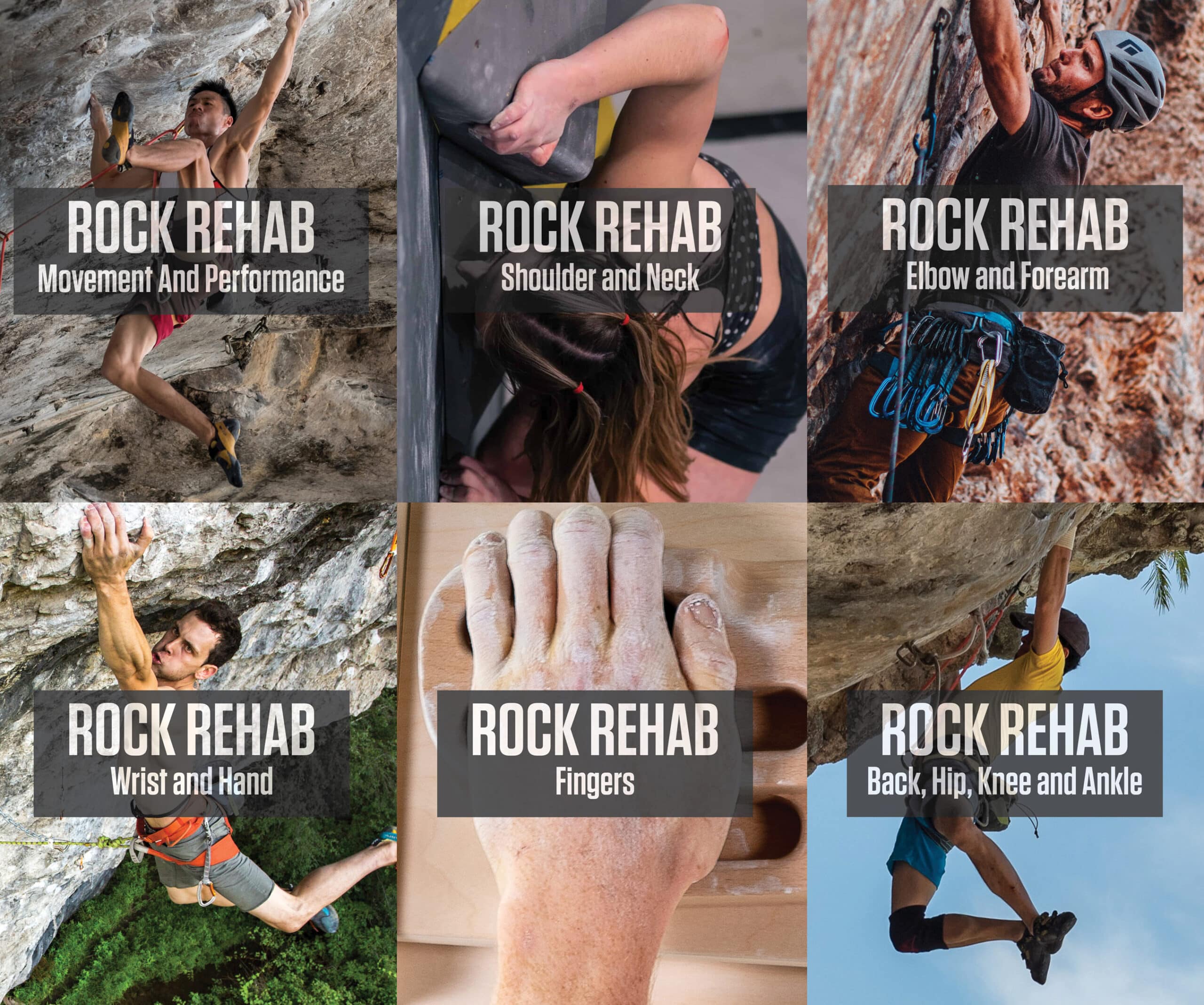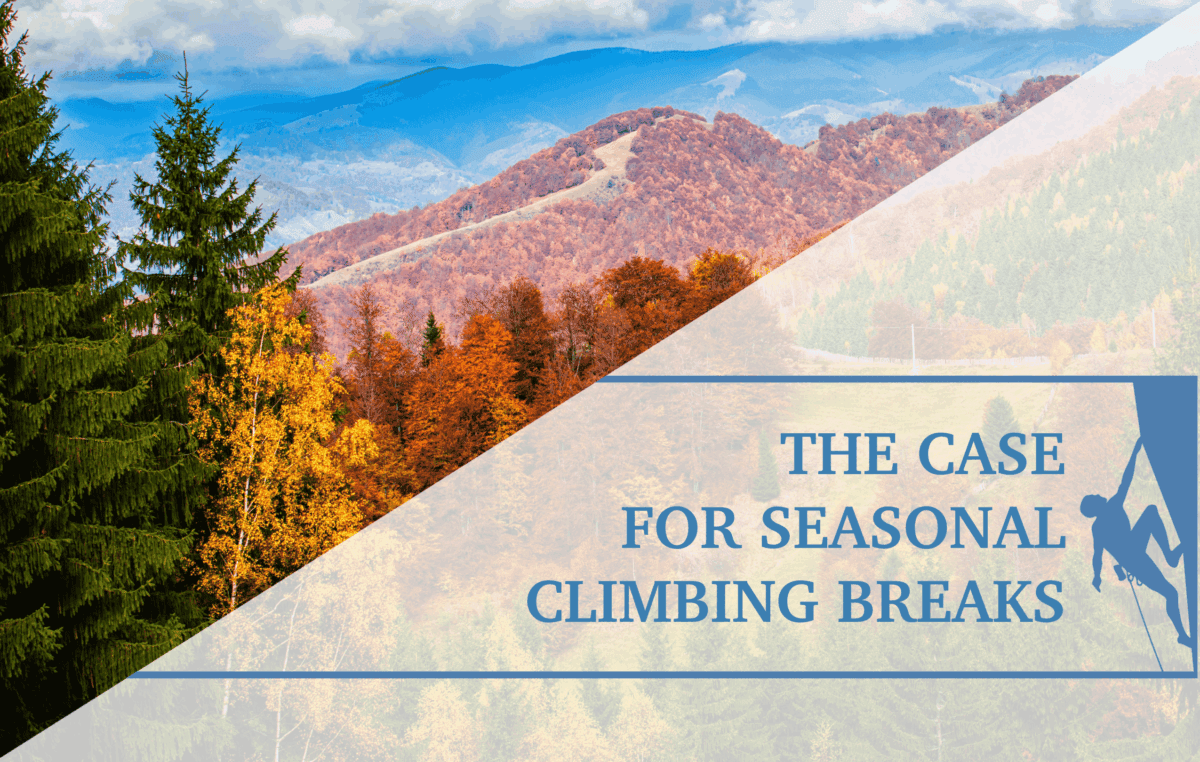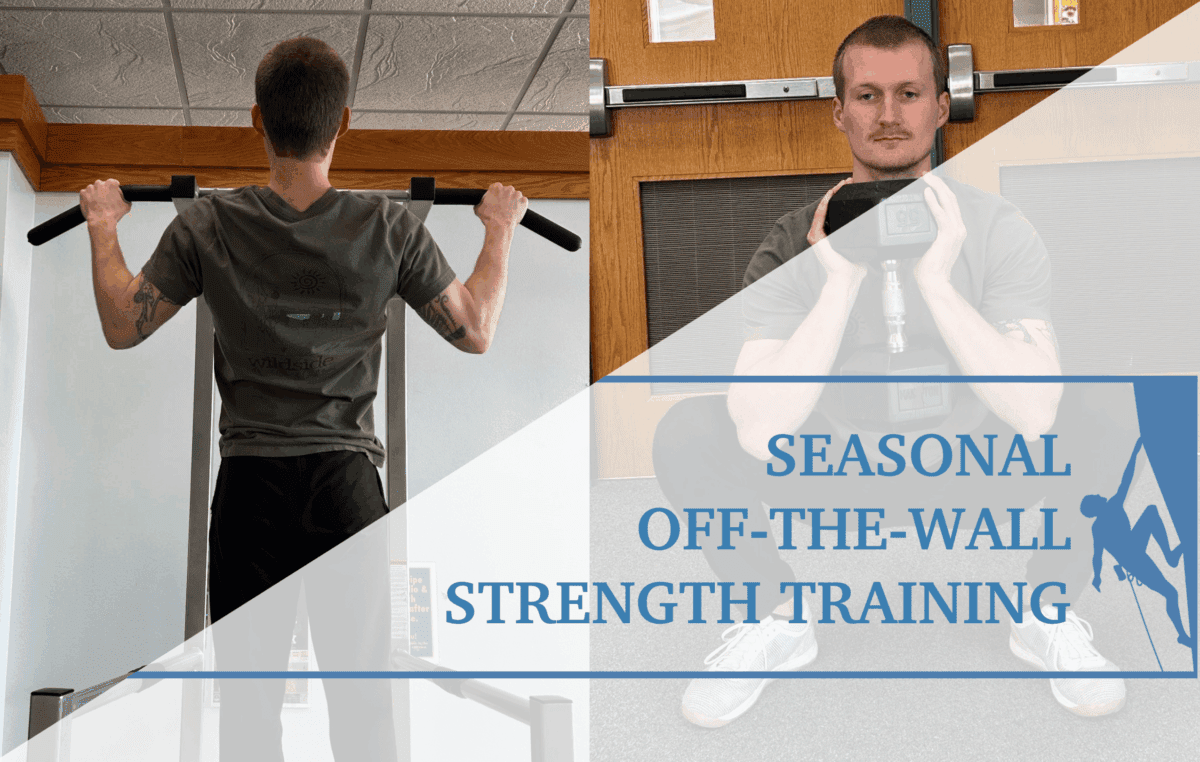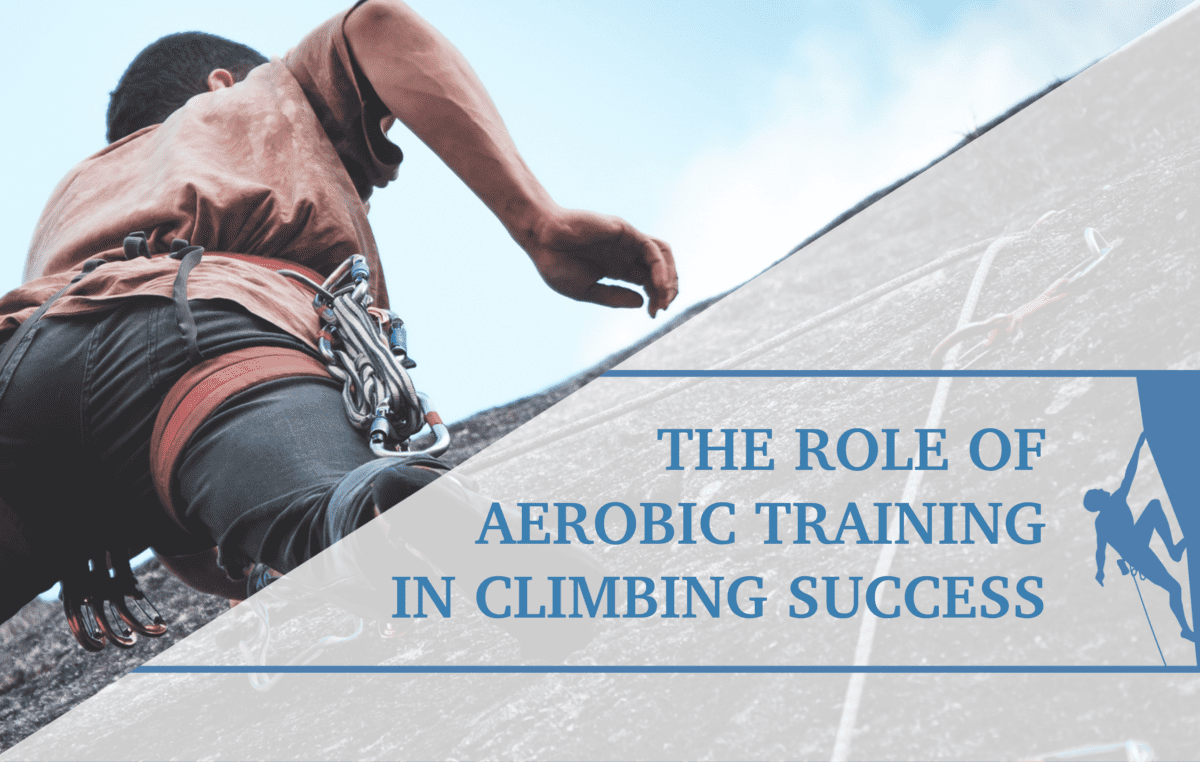Is Your Pain Just in Your Brain? Complex Region Pain Syndrome Climbing
Have you ever wondered if the pain that you are feeling is real or if it is just in head? There is a 100% percent chance that it is in your head, because that is where the interpretation of pain occurs. And it is typically there for a reason. Your tissues send warning signs, those signals travel through your nerves and up your spinal cord and arrive in the brain. The brain then process the information and determines whether or not you should feel pain. This is a protective mechanism and has allowed humans to survive and evolve. However, what happens when an injured tissue has healed, but you are still feeling pain. How do you treat that?
Graded Motor Imagery
There’s a step-by-step process that has been supported by literature and research that goes through a concept of created motor imagery. This three step process can be used when a climber has persistent pain in a region even when the tissues have healed.
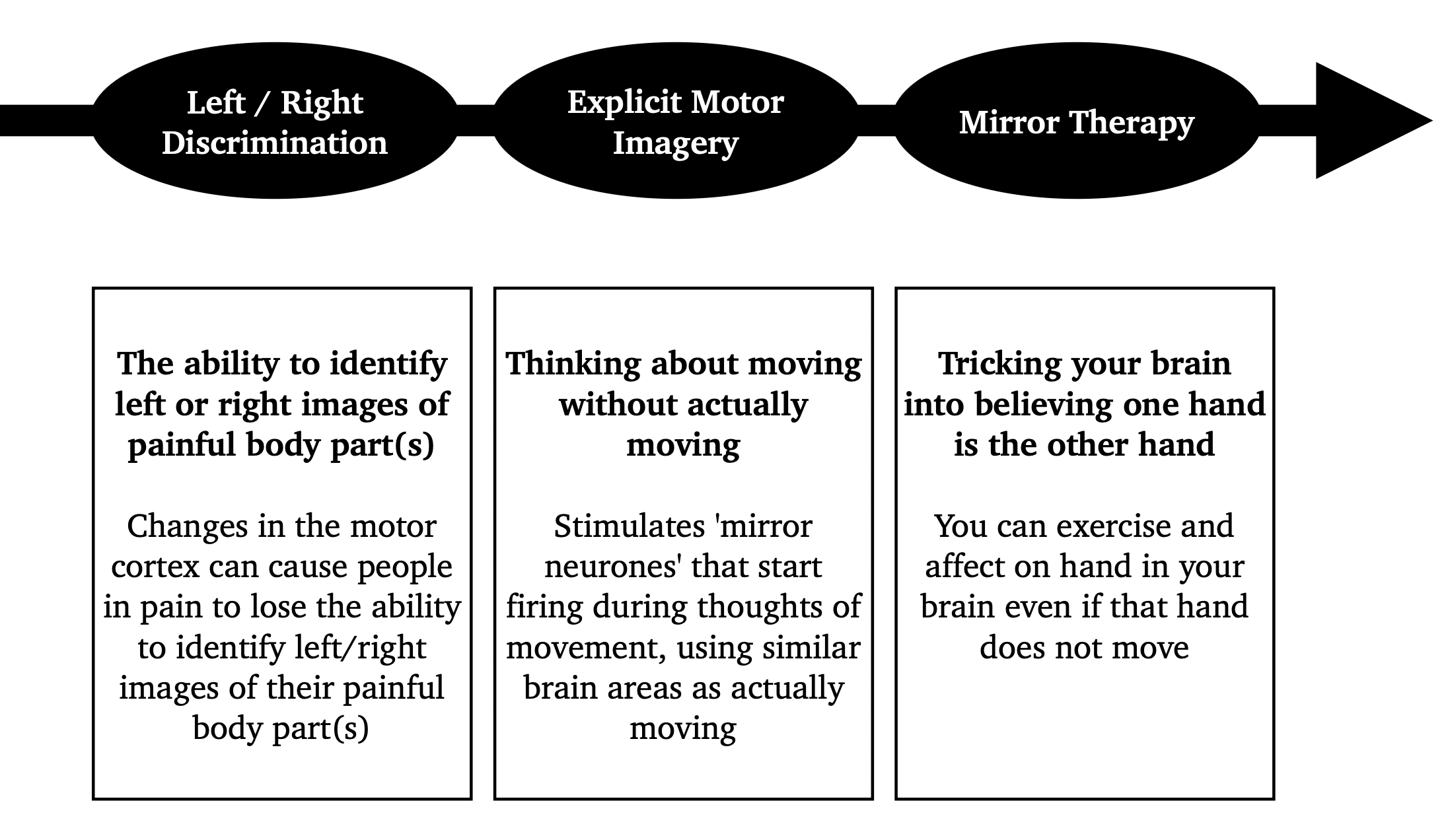
Step 1: Left-Right Discrimination
Let’s examine this mock demonstration of how we can test laterality, left-right discrimination, for a rock climber who has hand pain. To start, the climber will download the Recognize APP. They will then put it on their device and begin testing by hitting start. They’ll see various images of hands in different positions on the screen and will need to identify whether the image shows a left hand or a right hand. They will then click the left button or the right button to indicate their best guess. Climbers who are unable to accurately identify their affected hand may have a deficit in left-right discrimination. This APP can be used as an assessment tool to determine the accuracy and the time that a climber takes to identify the correct response. This is the first step in treating a climber with centralized pain; this left-right discrimination.
Step 2: Explicit Motor Imagery
The second step is this explicit motor imagery. This is where the climber imagines movements. Now, I want to think about this. Imagine the climber that we discussed earlier with hand pain. Every time that they think about grabbing a rock hold, their hand starts to hurt. They don’t grab the hold, they just think about it. So, we can use explicit motor imagery or imagined movements to start to habituate the central nervous system into the thought and the feeling and the sensation of gripping with the hand without actually doing it. This desensitization or habituation of the nervous system can prepare the climber to eventually get back on the rock wall. This is the second stage, imagined movements or explicit motor imagery.
Step 3: Mirror Therapy
The third stage of graded motor imagery is mirror therapy. We can use a mirror to retrain the stimulus and sensation of the climber gripping with their affected hand. We can see in this image that the climber has their right hand, their non-affected hand facing the mirror. As they look or peer into the mirror, they can see the reflection of their right hand, and it appears as though it is their left hand.
So, the brain is tricked into perceiving that the image they see in the mirror is really their left hand. There are many different ways that we can harness and utilize mirror therapy to progress and habituate a climber into moving their affected limb in their mind and then eventually moving the actual limb.
References
- Giannotti E, Koutsikos K, Pigatto M, Rampudda ME, Doria A, Masiero S. Medium-/long-term effects of a specific exercise protocol combined with patient education on spine mobility, chronic fatigue, pain, aerobic fitness and level of disability in fibromyalgia. Biomed Res Int. 2014;(2014):1-9, Article ID 474029.
- Chinn S, Caldwell W, Gritsenko K. Fibromyalgia pathogenesis and treatment options update. Curr Pain Headache Rep. 2016;20(25):1-10.
- Smart KM, Blake C, Staines A, Doody C. Clinical indicators of “nociceptive,” “peripheral neuropathic” and “central” mechanisms of musculoskeletal pain: A Delphi survey of expert clinicians. Man Ther. 2010;15:80-87.
- Lotze M, Moseley GL. Role of distorted body image in pain. Current Rheumatology Reports. 2007;9:488-496.
- Bowering JK, O’Connell NE, Tabor A, Catley MJ, Leake HB, Moseley GL, et al. The effects of graded motor imagery and its components on chronic pain: A systematic review and meta-analysis. J Pain. 2013;14(1):3-13.
- Butler DS, Moseley LG. Explain pain. Noigroup Publications, Adelaide, Australia, 2003.
Courses for Medical Providers and Coaches
Want to learn more ways to assess, diagnose and treat climbing shoulder and neck injuries? Check out the online course below to expand your knowledge and skillset in the management of rock climbing injuries. Click the course to learn more!
About The Author
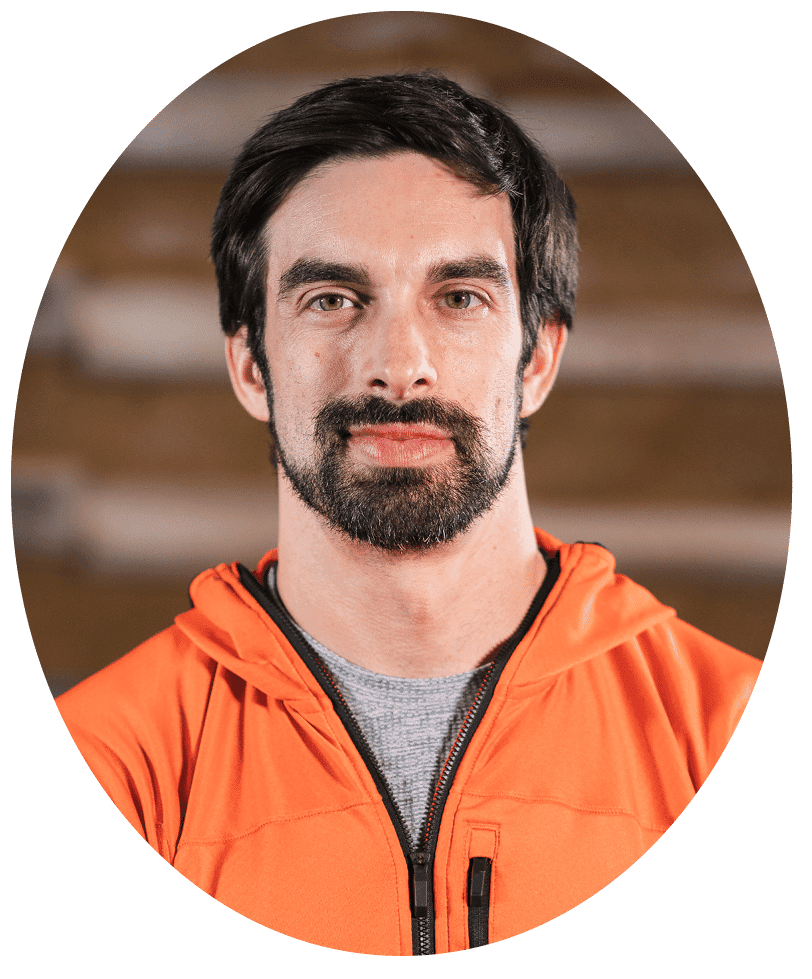
Jared Vagy is a doctor of physical therapy who specializes in treating climbing injuries. He is the author of the Amazon #1 best-seller “Climb Injury-Free,” teaches Climbing Injury Professional Education for Medical Providers, and is the developer of the Rock Rehab Protocols. He has published numerous articles on injury prevention and lectures internationally. Dr. Vagy is on the teaching faculty at the University of Southern California, one of the top doctor of physical therapy programs in the USA. He is a board-certified orthopedic clinical specialist. He is passionate about climbing and enjoys working with climbers of all ability levels, ranging from novice climbers to the top professional climbers in the world.
For more education, check out the Instagram page @theclimbingdoctor
- Disclaimer – The content here is designed for information & education purposes only and the content is not intended for medical advice.

